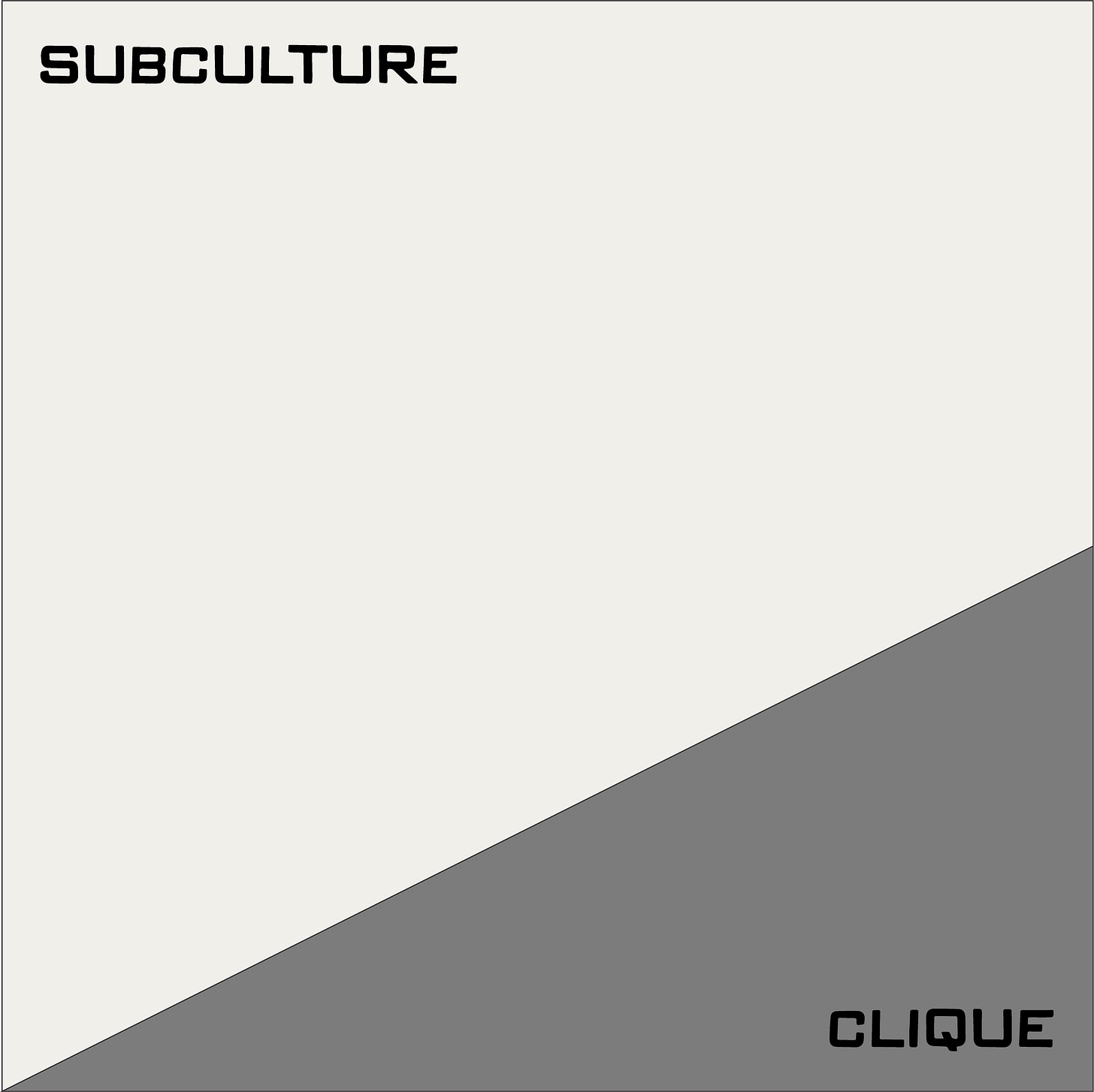The line between healthy subcultures and toxic cliques is razor-thin.
Subculture is an integral part of a strong organization. At the beginning, when companies are small, there's typically one culture. This is the foundation as the organization grows. But growth creates specialization. Not everyone has the same job. Some folks work in the field. Some in the shop. Others on corporate teams. Everyone's in the trenches working to make the company successful, but the trenches are all different.
This is where subculture comes in.
Each group both needs to and will naturally develop its own subculture. This stems from shared experiences and common work scope. It coalesces the team. Ideally, there's a culture-carrying leader that spearheads the subculture and unites the group. The team’s ties to this leader often match or exceed their ties to the overall company.
Healthy subculture is prosocial. It creates something bigger than any one person, that all can be a part of. It includes common language, team mottos, and swag. Trust and pride underpin it all. Subculture enables cultural reach that a top-down whole company culture can't achieve without feeling forced.
Teams use inclusive language when discussing challenges. Lots of "we" and "us." Groups actively collaborate across domain boundaries with other teams. Much work gets done. Subculture is good for business.
On the bad side of the line are cliques.
Cliques in organizations are basically the same as in high school. In their most basic form: exclusionary, critical of others, and ripe with gossip. At their worst: disrespectful and immature. They focus more on internal colleagues than external challenges. Cliques draw borders between teams and build identity through shared enemies. They demotivate and destabilize the organization.
The bad news is that once they form, cliques are hard to reverse. After a team flips from subculture to clique, usually the only option is a surgical removal of the entire group. You can try to address it with just the foremost clique leaders, but often the behavior and mindset quickly become deeply rooted. Leaving even the slightest bit can cause it to grow back.
This poses a practical challenge. It's understandably difficult to remove an entire team without losing functionality in the business.
The good news is that cliques aren't usually contagious. If Team A makes the unfortunate swap from subculture to clique, it doesn't necessarily trigger a chain reaction that causes Team B and Team C to follow. Team A might be an acute problem impacting the entire organization, but at least it's isolated.
Maintaining the balance is both straightforward and difficult.
First, don't let fear of clique ever hold back the healthy variant. Encourage subculture. It makes the entire organization stronger if everyone has deep, direct ties to their immediate peers. Find the right culture carriers, give them resources, and watch teams coalesce around them.
The best way to address cliques is to prevent them from forming in the first place. Create opportunities for cross-team interaction. Perspective is an excellent defense against clique. Bring groups together that wouldn't normally cross paths in their usual work.
It’s also essential to ensure the foundational organizational structure is strong and present. This can be difficult with distributed teams and during periods of high tempo. However, the organization’s core culture and values must always be present as a North Star for all subcultures.
At the same time, watch for the warning signs: inside jokes that become weapons, team meetings that devolve into gripe sessions about other departments, or culture carriers who build loyalty through shared negativity rather than shared mission. In summary, lots of "us vs. them."
If they do form, cut out cliques faster than you think you should. If you're inclined to try coaching first, set a firm deadline. In every instance I've dealt with this, I wish I'd moved to the scalpel faster. The loss of functionality we all so deeply fear rarely materializes, and if it does, it's never that bad.
Someone always rises to the occasion, especially when the clique is gone.





